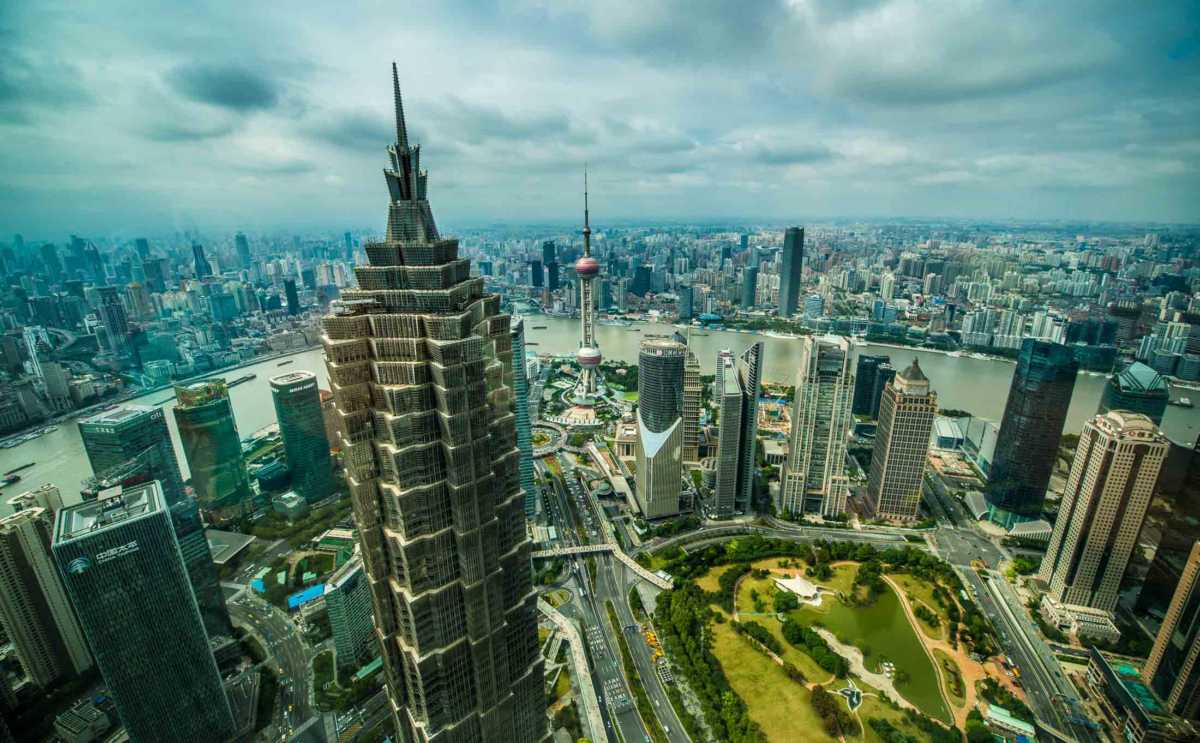
Editor's note: Do you want to get to know Shanghai right now, from home? As a result of the 2020 pandemic, Context Travel has introduced an excellent series of virtual seminars. These live, scholar-led courses even allow time for discussion and questions. Browse the Context Conversations calendar and book your seminar today. When you register, use the discount code tp50 for a 15 percent discount on your first booking. Just pull up a chair and soak up the knowledge, even if you can't travel.
Shanghai is frequently described as the New York City of China. People say Shanghai is to Beijing as NYC is to Washington, D.C. The comparison works. Shanghai is a port city, straddling the Huangpu River which empties into the Yangtze. So it’s open, airy, and brighter than Beijing, with about a 100% chance of less pollution than the inland capital. Shanghai is contemporary, vibrant, and forward looking.
We arrived in Shanghai with Viking Cruises, wrapping up our Viking River “Roof of the World” itinerary. But we allowed extra time (yes, that’s our mantra) to take Context Travel’s Accelerated Shanghai tour. That’s how we learned just how new Shanghai is and how fast and constant the change.
Every visitor to Shanghai is certain to linger over the iconic view across the river, looking from the Bund, the 1920s row of prominent buildings along the river promenade, to the expanse of glittering lights and glass across the river. The astounding part is that the spectacle across the river–the Pudong financial district–was built within the past decade–mostly in the last five years. The Atlantic published a cool photo story of the transition a couple years ago. This shows the “before” I could only imagine: the fishing village of Pudong from the 1980s.
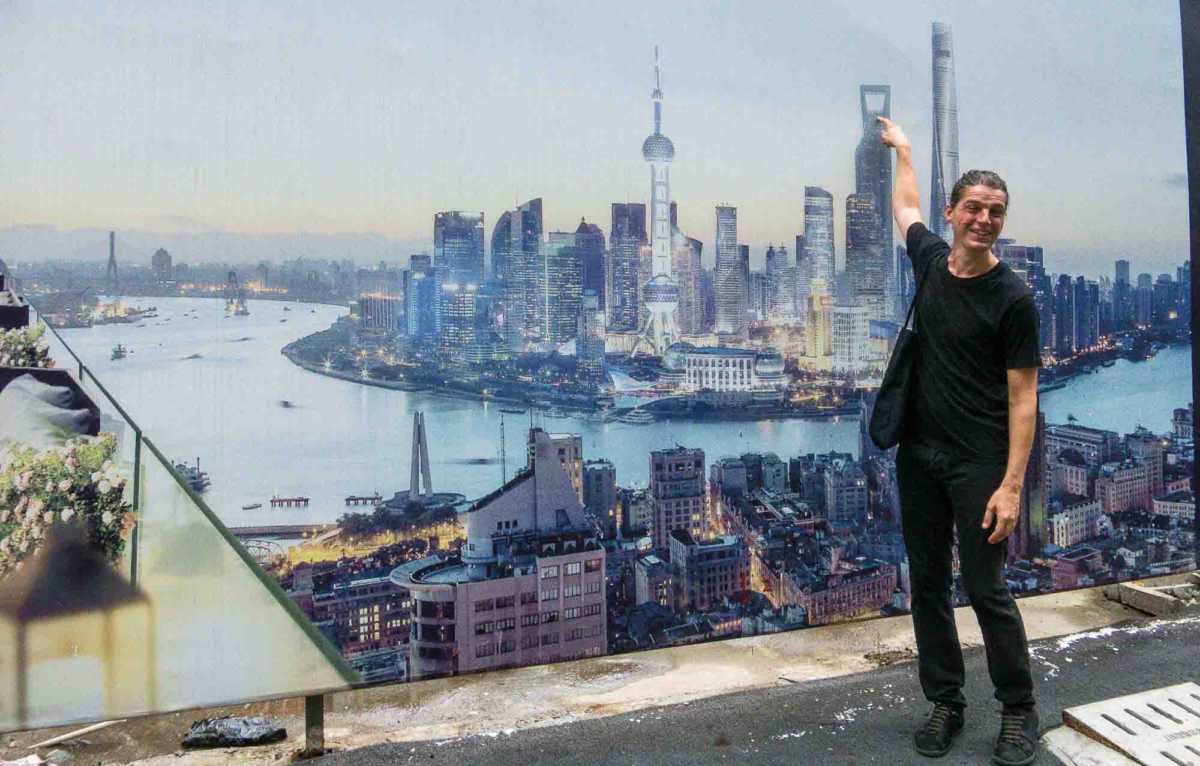
A closer look at the city with Context Travel traces the real change in Shanghai’s residential neighborhoods and the accelerated rate of urban renewal. We began our orientation with our docent, Bert, in the showroom of a new condo building in an area still in transition. Models of the district show it’s strategic place along the Suzhou Creek which meets the Huangpu nearby. This was an industrial zone busy with manufacturing of cotton, warehousing and transportation.
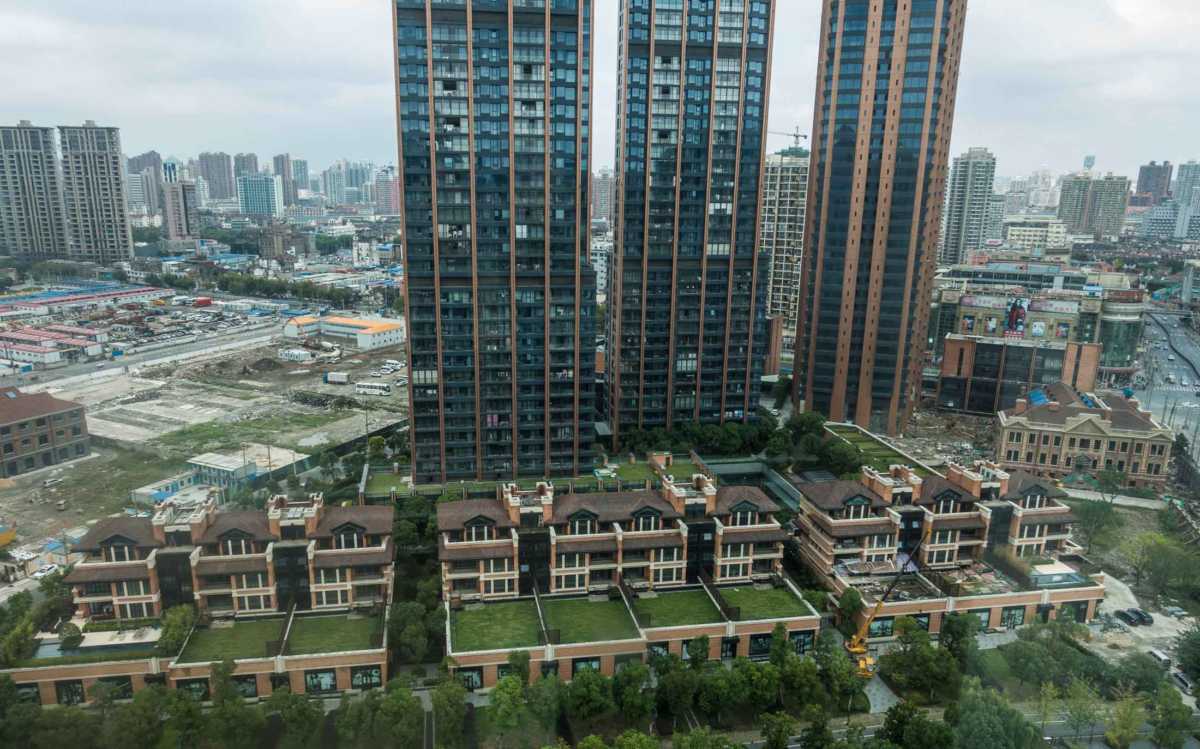
The model doesn’t show the past, but with Bert we were able to walk through it and get views from above. The past included the Lilong neighborhoods, referring to the Shanghai-style housing built primarily from the 1890s-1930s. The tenement housing fit closely together on small alleys, which in turn opened through gates to the main artery streets. The remaining Lilong–only about 5-10% of Shanghai’s housing today–show how they’ve been used and altered over the years. Multiple entries service multiple families, kitchens are shared, rooms and balconies are divided or enclosed or adapted to suit the current resident. Still, the wooden window frames and tight quarters embracing various ages and occupations elicit a mood of cooperation, of people occupying their own space in time, despite the changing world outside.
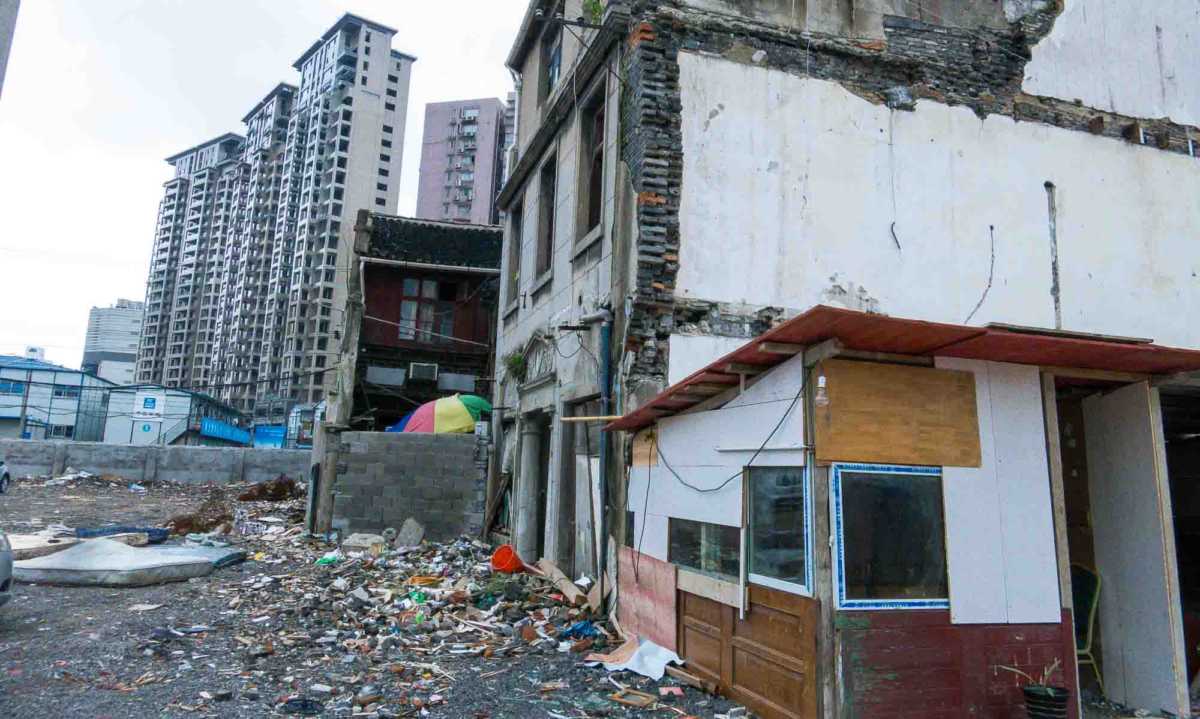
We walked through the change in progress, where blocks and blocks of Lilong have been torn down. Usually, the outer walls of the blocks, even the outer ring of houses, are left standing as a visual and security barrier to the empty lots within. Walking these lots left as big an impression on me as seeing the skyscrapers of Pudong. A few hangers-on post signs decrying the development onslaught. But passers-by barely notice the construction, it is so constant and pervasive. They might notice the high end fashion billboards, or the advertising promise of living in new luxury condos: “A slow walk in the center is like walking in the air.”
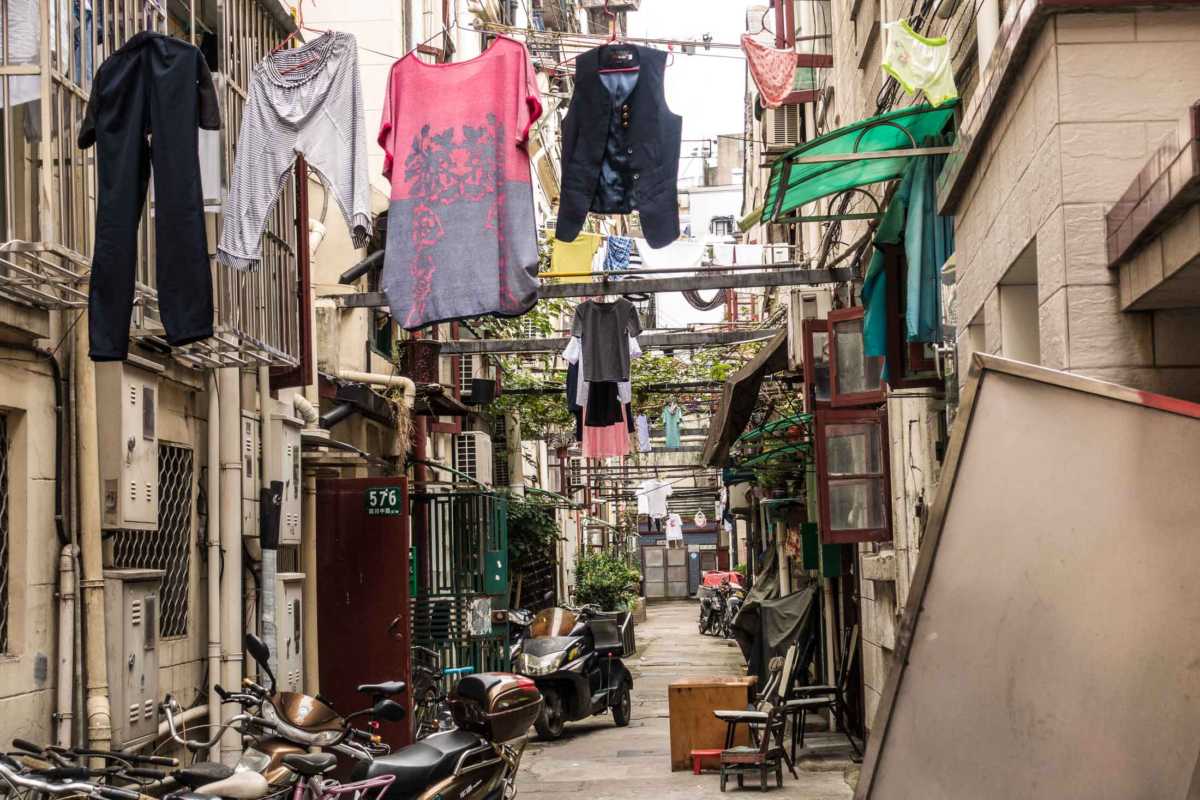
At best, some development preserves the old warehouses and renovates with a sense of history. Exposed bricks, human-size entries, and access to the pedestrian riverfront and bridges are good signs. The historic Victor Sassoon Residence, once the center of Sephardic Jew refugees in Shanghai, appears to be undergoing a conversion to condominiums.
But the new-from-the-ground-up condos are already vying for attention, for river views, and for prestige. Luxury condos might be 150-200 square meters (1600-2200 sq. ft.) compared to typical Shanghai homes of about 80 square meters (860 sq. ft.). At $8,000-9,000 per square meter, prices quickly reach around $1.5 million.
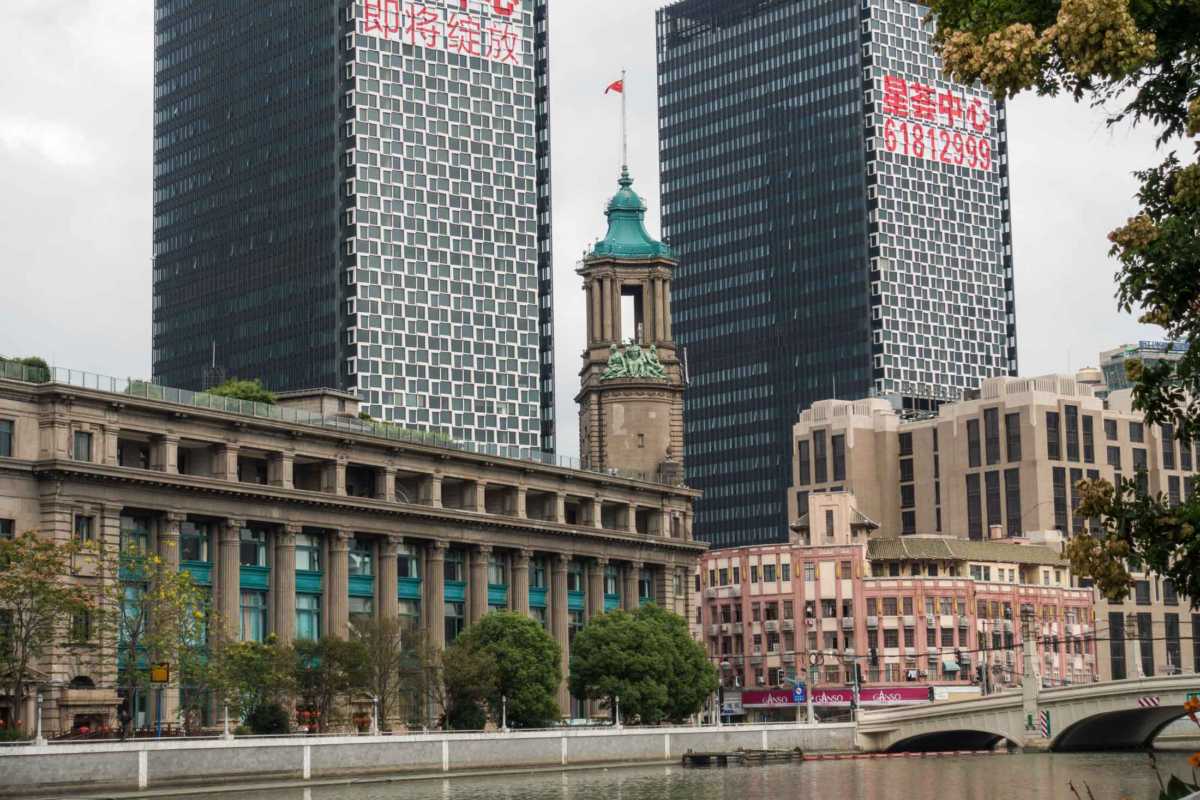
Bert escorted us to a couple great look-out points. First, from the friendly Jiuchutang restaurant atop the Bund Riverside Hotel and business tower on Suzhou Road we could view the past: the empty lots we’d just walked and the transitional areas. Then, after some deft maneuvering through the crowds on the ferry, we looked at the future from the upper floor bar in the Shanghai World Financial Center. Only with a tour like this can a casual visitor to Shanghai see the scale of the place. The fastest growing city in the world deserves this close look.
October in Shanghai
Our visit to Shanghai fell over the Golden Week holiday in early October. What started as China’s National Day was expanded in 2000 to a full week to promote domestic tourism and build commerce. The economic boost seems to be working. Shanghai was packed with Chinese visitors. Our Viking accommodations, at the Peace Hotel Fairmont right on the Bund, were in the thick of the crowds. In the evenings, streets were closed and rows of police kept the masses shuffling along. It was so packed, Tom and I ventured out separately to navigate to the river edge for photos so that we wouldn’t have to keep track of each other. Neither of us lasted more than about 20 minutes in the throngs.
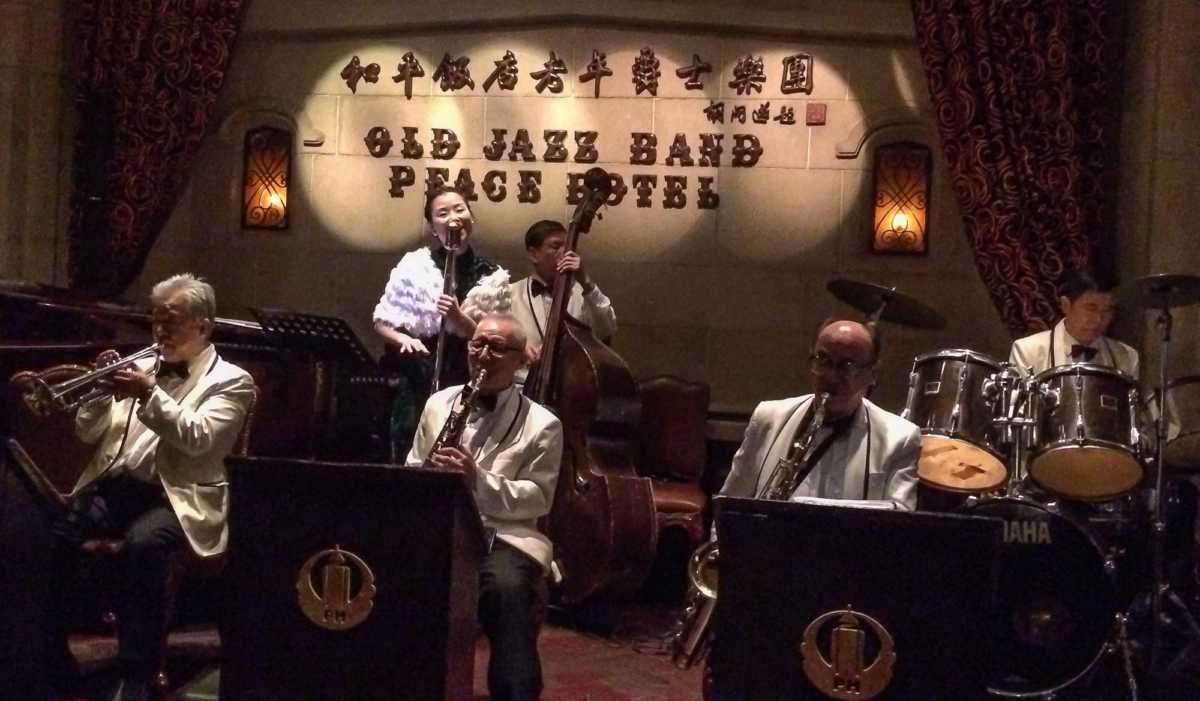
During the day, we had time for a more relaxed walk along the Bund, ducking into historic buildings (the Development Bank and Customs House, Chartered Bank Building, and the Peace Hotel itself). We toured the extraordinary Yuyuan Garden with Viking and shopped around that area’s bazaar. We visited the Shanghai Museum, probably the best exhibit of ancient Chinese art in mainland China, and would love to return there someday. (Of local note to Minnesotans, Minneapolis collector and department store figure Bruce B. Dayton is named on the museum donor wall.)
Our Roof of the World Yangtze River Cruise, with side trip to Tibet, was hosted by Viking. We were also guests of Context Travel’s Accelerated City tour. Thanks, too, to Peace Hotel Fairmont for inviting us to check out the oldest jazz band in the world, performing nightly in the hotel lounge.
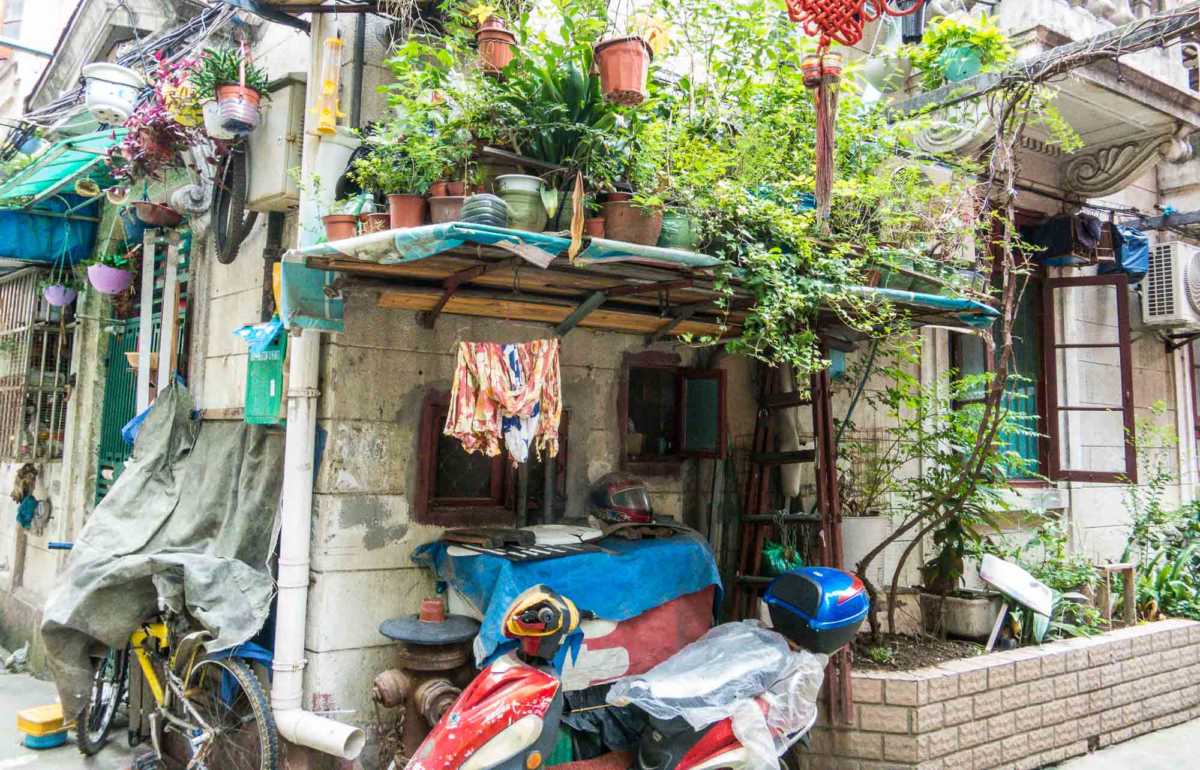
Elsewhere in Shanghai, the 16th Century Yuyuan Gardens provide green space, a look at beautiful tea house and opera house constructions, and entry to…shopping, of course, at the adjacent Yuyuan marketplace.
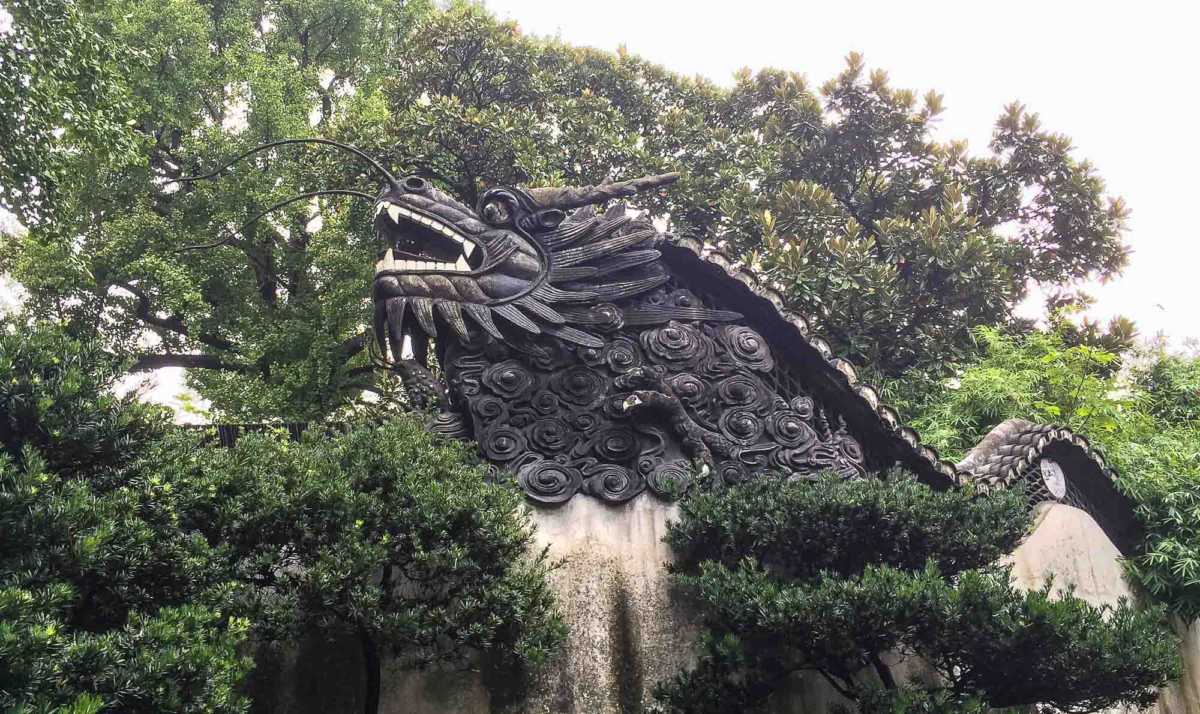
You can see more views of Shanghai, specifically the Shanghai skyline and The Bund, in this post.
We have done more than a dozen Context Travel tours on four continents and have always found them excellent, informative, and enjoyable. You can see our other stories on our Context Travel tours in Buenos Aires, Paris, Berlin, Shanghai, Beijing, Hong Kong, Montreal twice, Budapest twice, Rome twice, Arles, Florence, and Venice by clicking on the links.
If you are thinking a Context Travel tour is for you, click here, and see if they have a guided tour available in the city you are visiting.
Up Your Travel Skills
Looking to book your next trip? Use these resources that are tried and tested by us. First, to get our best travel tips, sign up for our email newsletter. Then, be sure to start your reading with our Resources Page where we highlight all the great travel companies and products that we trust. Travel Accessories: Check out our list of all the accessories we carry to make getting there and being there a lot easier. Credit Cards: See our detailed post on how to choose the right travel rewards credit card for you. Flights: Start finding the very best flight deals by subscribing to Thrifty Traveler. Book your Hotel: Find the best prices on hotels with Booking.com. See all of the gear and books we like in one place on our Amazon shop.Got a comment on this post? Join the conversation on Facebook, Instagram, or Threads and share your thoughts!



Comments are closed.